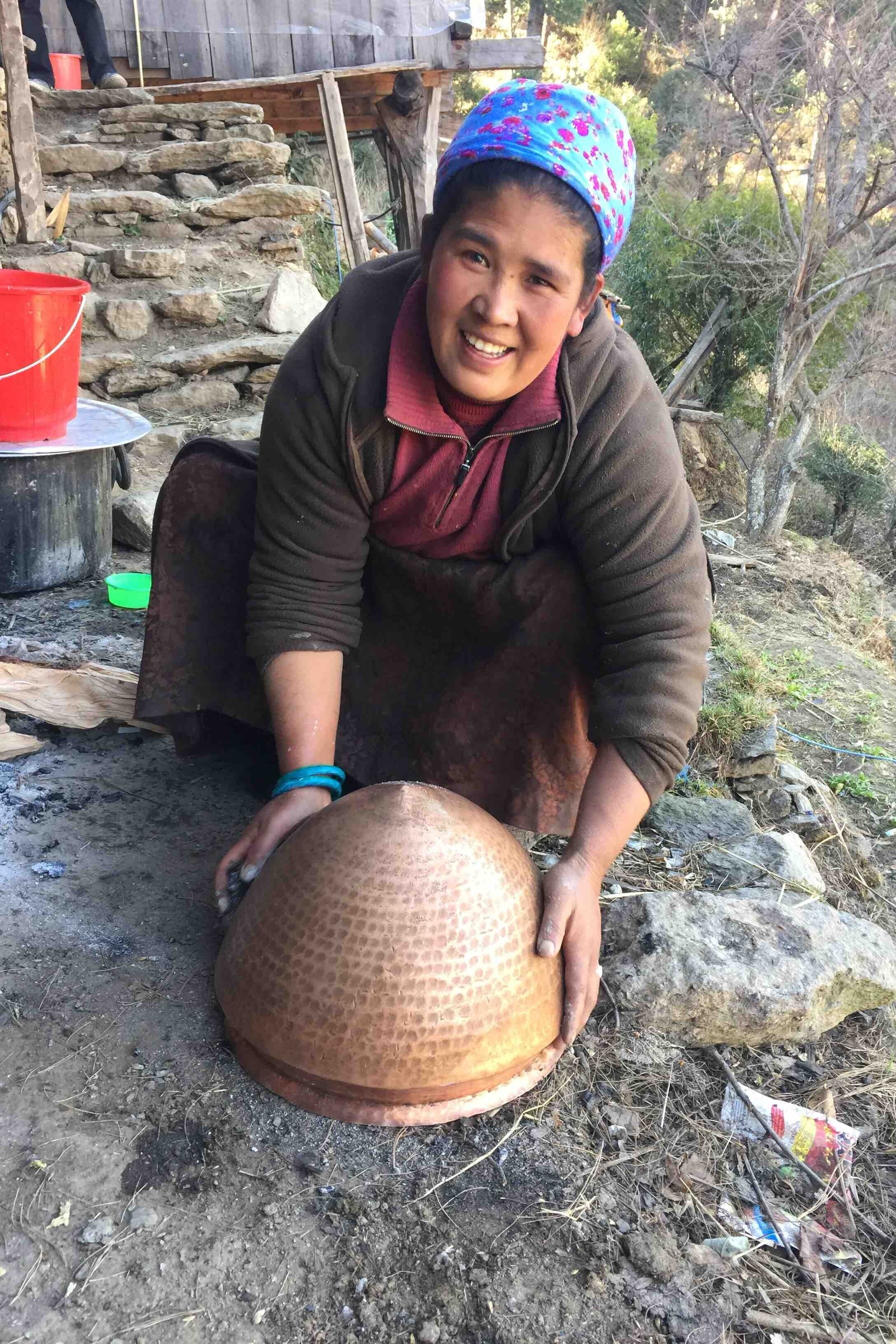Ganesha Cookstove Project
Around the Distillery and Tasting Room, Montanya Distillers co-founder and head distiller Brice Hoskin is known for giving a killer presentation on distilling. Want to know exactly how barrels affect the flavor of rum? He’ll tell you (get Brice and co-founder Karen Hoskin going, and you’ll get yourself a proper distilling education). Brice is also the mastermind behind one of our social entrepreneurship companies, Ganesha Cookstove Project. It’s a passion project that grew out of a trip to Nepal more than 25 years ago and now seeks to give families in Nepal a more efficient alternative to cooking over open fires.
Bibi, who together with her husband, hosted Karen and Brice Hoskin in Nepal in 1992. Shown with her home still.
In 1992, Brice and Karen visited Nepal, where they stayed with a couple in their home. The wife cooked over an open fire in the middle of the room, and every morning when she blew on the coals to get the fire going, Karen and Brice watched the smoke fill the room.
“That’s still normal,” Brice says, pointing out that around 65% of households in Nepal still cook on fires. The cooking fire is the center of life, generating smoke all day long. “Three meals a day, plus they heat up food for their animals once a day and they distill alcohol.”
Courtesy Ganesha Cookstove Project
Small, wood-burning cookstoves can provide a more efficient alternative—something Brice became interested in about 20 years after that trip to Nepal. As a backpacker, he started experimenting with wood burning backpacking stoves. Most of them weren’t very good, and when he found one that did work well, it was too big and too heavy to comfortably bring backpacking (about the size of a small pumpkin).
Brice started to tinker, which—if you know Brice—has a tendency to lead to more than tinkering. Over time he developed a smaller stove that incorporated gasification, or the introduction of secondary air to actually burn smoke, methane and other gasses released by the fire. The pieces were flat and fit in a FedEx envelope, perfect for sending to a place like Nepal, where he saw an unfilled niche for just such a stove.
“You're not going to change the world with something people don't like to use. They have to like to use it, they have to want it… And we actually found that the longer people have the stove the more of their cooking they do on it.”
-Brice Hoskin
Before long, what grew out of curiosity turned into Ganesha Cookstove Project—an ongoing project to field test the stoves in Nepal, incorporate the feedback and turn the product into something that Nepalese families can afford and would actually use.
It has taken many iterations, donations and nonprofit partners, but Ganesha Cookstove Project now has a small, efficient wood burning stove that 93% of people liked so much they would be willing to buy it. That’s a very high rate of acceptance for any new product in the developing world. They can also use the stoves for the majority of their cooking needs (early prototypes had fewer uses). And compared to cooking over an open fire, the stoves cut emissions and fuel use roughly in half. That translates into fewer trips to collect fuel, and more time for the cooks (primarily women) to do other things.
Brice is now working with partners in Nepal to spread awareness about the stove and ultimately produce and distribute it on a wider scale—including a television spot through Prime Time Television Nepal. What’s most inspiring about the project is that the stove has been developed in partnership with the people who use it.
As Brice says, “You're not going to change the world with something people don't like to use. They have to like to use it, they have to want it… And we actually found that the longer people have the stove the more of their cooking they did on it.” Learn more about the project at Ganesha Cookstove Project.





